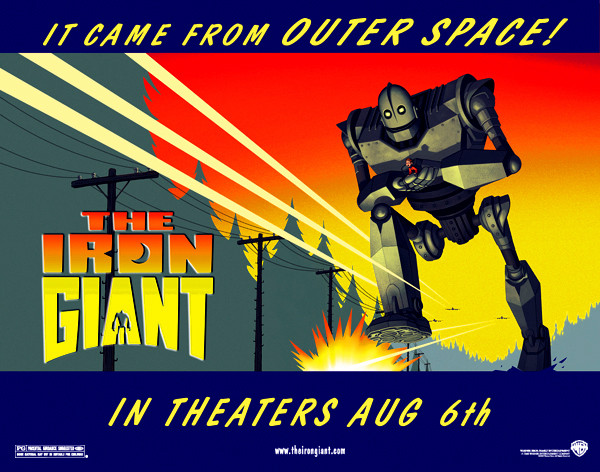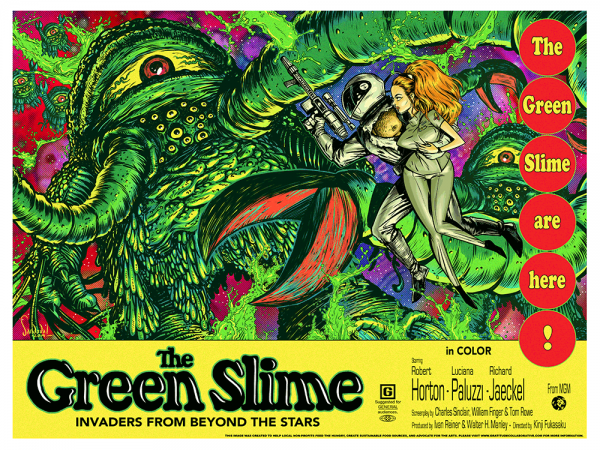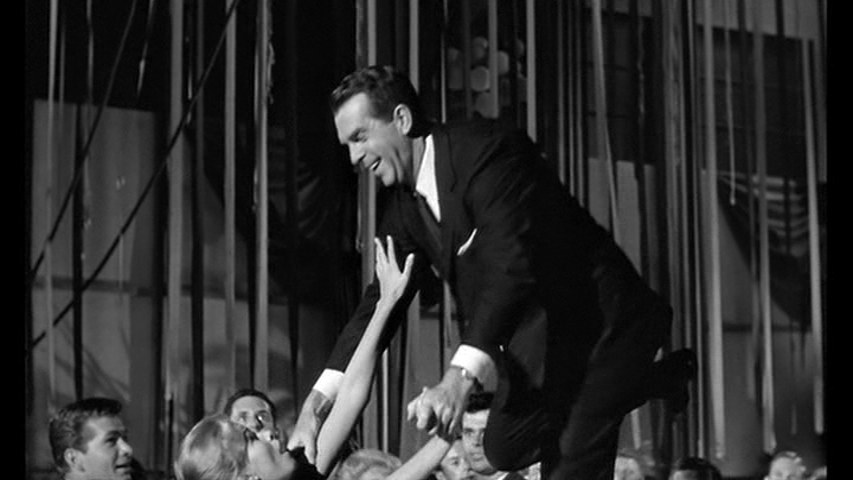 Over the years Brad Bird has become one of the more respected
directors in the field of animation, even doing decent work in live
action with Mission Impossible: Ghost Protocol and Tomorrowland,
but once upon a time, long before all this fame and fortune, he was
just a recently fired animator from Disney. It was the people at Warner
Brothers who gave him a shot at directing a feature length animated film
based on an a science fiction novel by British Poet Laureate Ted
Hughes. That movie was to become The Iron Giant and
today we will take a look at how that film, which at the time was a box
office failure but now is considered to be a classic, came to be.
Over the years Brad Bird has become one of the more respected
directors in the field of animation, even doing decent work in live
action with Mission Impossible: Ghost Protocol and Tomorrowland,
but once upon a time, long before all this fame and fortune, he was
just a recently fired animator from Disney. It was the people at Warner
Brothers who gave him a shot at directing a feature length animated film
based on an a science fiction novel by British Poet Laureate Ted
Hughes. That movie was to become The Iron Giant and
today we will take a look at how that film, which at the time was a box
office failure but now is considered to be a classic, came to be.The book by British author Ted Hughes was titled The Iron Man, later published in North America as The Iron Giant so as not to be confused with Marvel’s Invincible Iron Man, and it truly is a magical book; basically a modern day fairy tale with a science fiction bent. For those only familiar with the Brad Bird movie I will give you a quick synopsis of the book.
The story opens with a towering figure made of Iron as it tumbles down a cliff and is subsequently dashed to pieces. Certainly not a heroic introduction to a character but The Iron Man isn’t your typical hero as bit by bit he pieces himself back together and then proceeds to go and find food, unfortunately for the residents of this seaside community that diet consists of a whole lot of metal. No parked car is safe. A young boy by the name of Hogarth witness this towering machine of destruction and rushes home to inform his dad, who unlike most dad’s in this situation completely believes his son, and soon the whole community is rallied to combat this strange menace. We can't really find fault with this reaction as one can’t just let giant iron golems wander around eating your cars and tractors. The plan they come up with to defeat this “Iron Man” is to dig a huge covered pit, but their bait of an old vehicle doesn’t seem to do the trick and it is eventually Hogarth who lures the Iron Man into the trap. The kid informs his dad of this new development, the town mobilizes and the Iron Man is buried alive...but not forever. Come the following spring the Iron Man burst free of his grave, completely ruining a family’s picnic, but instead of calling the military to step in Hogarth comes up with the brilliant idea of convincing the Iron Man to follow him to the local scrapyard. With a seemingly inexhaustible supply of food the Iron Man promises not to cause further trouble for the locals, as long as no one troubles him.
Yet that is not the end of the story; astronomers discover a strange star heading to Earth, one that is soon revealed to contain a massive creature that is described as a Space-Bat-Angel-Dragon. When the monster makes landfall, its size so colossal that it completely covers Australia, it quickly demands that the people of Earth provide him with food or else it will wreak havoc on this tiny planet. Unlike the Iron Man the space-dragon needs organic food and it's quite clear that humanity would be unable to supply enough food for this creature, even if they wanted to, and so the world’s combined military forces attack. Sadly this only results in the Space-Dragon giving humanity a rueful smile as Earth's weapons are useless against it. Enter Hogarth who convinces the Iron Man that if mankind is wiped out no one will be making metal for him to eat, and that it's in his best efforts to take on the space-dragon. Now as big as the Iron Man is he is not quite in the same league as a creature that's the size of a continent; so the Iron Man uses his wits to defeat the space-dragon. The Iron Man makes a bargain with the creature; if he can withstand the heat of burning petroleum for longer than the space-dragon can withstand the laying on the surface of the Sun, the creature must obey the Iron Man's commands forevermore. If the Iron Man melts or is afraid of melting before the space being undergoes his attempts or quits due to fear or pain, the creature has permission to devour the whole Earth. After two rounds, and being badly ravaged by the intensity of the Sun’s heat, the space-dragon capitulates.
Things take a surreal turn when the Iron Man learns that the Space-Dragon is actually a peaceful "Star Spirit" who only came to Earth, with threats of violence and destruction, because it had witnessed the sights and sounds produced by the violent warfare of humanity. The Space-Dragon’s normal job is to sing the “music of the spheres” which is the harmony of his kind that keeps the Cosmos in balance. The Iron Man orders that the Space-Dragon/Star Spirit to sing to the inhabitants of Earth, and the beauty of this music distracts humanity from its destructive nature causing the first worldwide lasting peace.
So right off the bat one must wonder, “Where the hell was the Space-Dragon in Brad Bird’s movie?” Well a lot happened to the project as it went from page to screen; first a Peter Townsend musical stage version of the book was made, which had several changes of it's own from the book, but when Townsend was convinced this could make for a great animated movie he brought the project to Warner Brothers. Enter Brad Bird and The Iron Giant.
Warner Brothers had been trying to get some of that sweet, sweet box office money that Disney had been raking in since The Little Mermaid debut in 1989, but Warner’s was not really known for their full length animated features. So the studio offered up and coming animator Brad Bird, formerly of Disney (fired for fighting with the brass) and lately of The Simpsons fame, and a pick of projects they had on the go. Lucky for us the only one that really intrigued him was The Iron Giant, but what Brad Bird wasn’t interested in doing was a Disney musical. As that was the whole point behind the Pete Townsend rock-opera connection, and where Warner Brothers had planned this story to go, this became a brief sticking point. That is until Brad Birded pitched the idea of “What if a gun had a soul?” The people at Warner's all agreed that this was an interesting idea, and as Townsend would get paid whether or not his music was used he had no problem with the change either.
There is a big difference between a passion project and a director for hire, John Carpenter’s Christine being a prime example of a director doing it simply for the paycheck, but though The Iron Giant project didn’t originate with Bird he pretty much tossed out the book and turned the whole thing into a personal mission. A key element in the production of this movie, and what led to the “What if a gun had a soul?” theme, is that Brad Bird himself had been greatly affected by gun violence for his sister had been shot and killed by her husband. So it’s not surprising that this kind of traumatic event skewed this film from a metal giant and a space dragon, as it appears in the book, to the anti-gun themed story that the movie became.
“You are who you choose to be.”
Aside from the fact that the movie contains a large iron man, and he befriends a boy named Hogarth, there are almost no similarities between the book and the movie. In the book the boy has two loving parents while in the movie Hogarth (Eli Marienthal) lives with his mom Annie Hughes (Jennifer Aniston) who is a single parent.Note: The lack of a parental figure is a standard Disney cliché and something Brad Bird must have absorbed during his time at the House of Mouse.
In the movie the character of the Iron Giant (Vin Diesel) is a being we learn crash landed on Earth due to an impact to his head, which caused him to developed amnesia. This amnesia allows the Iron Giant to befriend Hogarth, much as stray dog would to a new master, but then as the film progresses the Iron Giant’s character changes from pet, to friend, to eventual hero. Who and where the Iron Giant came from is mostly a mystery for the bulk of the film’s running time, and even in the director’s cut of the film where we get a dream sequence of the Iron Giant being part of a metal army that lays waste to alien worlds, we still don’t find out what caused the Giant to land here on Earth. In the book none of this exists. As mentioned the book opens with The Iron Man standing at a seaside cliff where we learn he can rebuild himself if he is broken apart, but the reader learns nothing about his origins. He could have been built by a mad scientist or possible by the Greek god Hephaestus. His origin was not important to the tale Ted Hughes was telling.
Note: That the parts of The Iron Giant are able to slowly come back together after being smashed to pieces is about the only character trait that Brad Bird took from the book.
The Iron Man by Ted Hughes is a rather short fairy tale, where this mysterious metal man is at first perceived as a threat, but who in the end becomes mankind’s savior. Now in broad strokes that looks to be very similar to the Brad Bird version but in placing his version of the story in the 50s, during the height of Cold War paranoia, this changes key elements. Aside from the Space-Dragon the book has no key antagonist, the townsfolk are all for getting rid of the Iron Man but they only go as far as building an ineffectual pit trap for the giant, but in the film Bird creates the character of Kent Mansley (Christopher MacDonald) a Federal Agent who considers anything not from America to be a threat. This antagonist does not exist in the book, neither does the eventually threat of military action against the giant, and with this major change the dynamic of the story is shifted. In the book Hogarth Hughes is a pretty passive character; he alerts the community of the Iron Man’s existence, lures it into the trap, convinces it to live peacefully and eventually helps overcome the threat of the Space-Dragon, but he doesn’t really do much more than offer advice and suggestions. On the other hand the Hogarth of the movie is a kid of action; he saves the Iron Giant from being electrocuted when it inadvisably tries to eat a power station, he finds a good source of food for the Giant, but most of all he thwarts Kent Mansley at every turn.
“And all that it implies."
The
book version of Hogarth is never in any real danger while movie Hogarth
has inadvertently befriended a weapon of mass destruction that if
triggered could blow the poor kid into atoms. Kent Mansley, who as a
foil of Hogarth’s starts out comical and buffoonish, but then slowly
turns dangerous as almost destroys the town and all its inhabitants. Not
to mention the fact that he chloroforms a child after a sinister
integration. Lucky for Hogarth he isn’t alone in his battle against
authority as he is able to enlist local beatnik Dean McCoppin (Harry Connick Jr.)
to help hide the giant and keep the military from finding out about
this strange invader. Dean is another character not found in the book,
and he serves as the counter culture reflection of Kent Mansley, and it
is Dean who instills the wise words to Hogarth, “You are who you choose to be.” This
father figure is instrumental in helping Hogarth turn what was once a
ruthless killing machine into the hero it wants to be.That is one brave kid.
The Iron Giant himself is a fantastic creation of Brad Bird and his fellow animators; the giants growth from lost and befuddled creature to heroic savior is masterfully done, and when a panicked and frustrated Kent Mansley orders a nuclear strike that would devastate the town and kill all the inhabitants, it is this soulful being that sacrifices itself to save his friend. And if you don’t tear up when The Iron Giant utters the name, “Superman” as he collides with the nuke there is a good chance you have no soul.It is almost impossible to compare the book to the movie; one is a lovely fairy tale that deserves all the accolades it got, while the other is an action/comedy/science fiction adventure movie with tons of heart. These two stories are too vastly different to give an honest comparison, and both are good in their own right, but for me The Iron Giant will always hold a special place in my heart.
Note: That the movie turned out as good as it did should be considered a bloody miracle; Brad Bird and crew worked with a budget and time frame a fraction of what a Disney feature would have been given, and due to the failure of Warner’s Quest For Camelot it got dumped into theatres without even a proper marketing campaign. Truly a cinematic crime, but at least over time it has gained more and more adoring fans to it's wonderful legacy.

























































